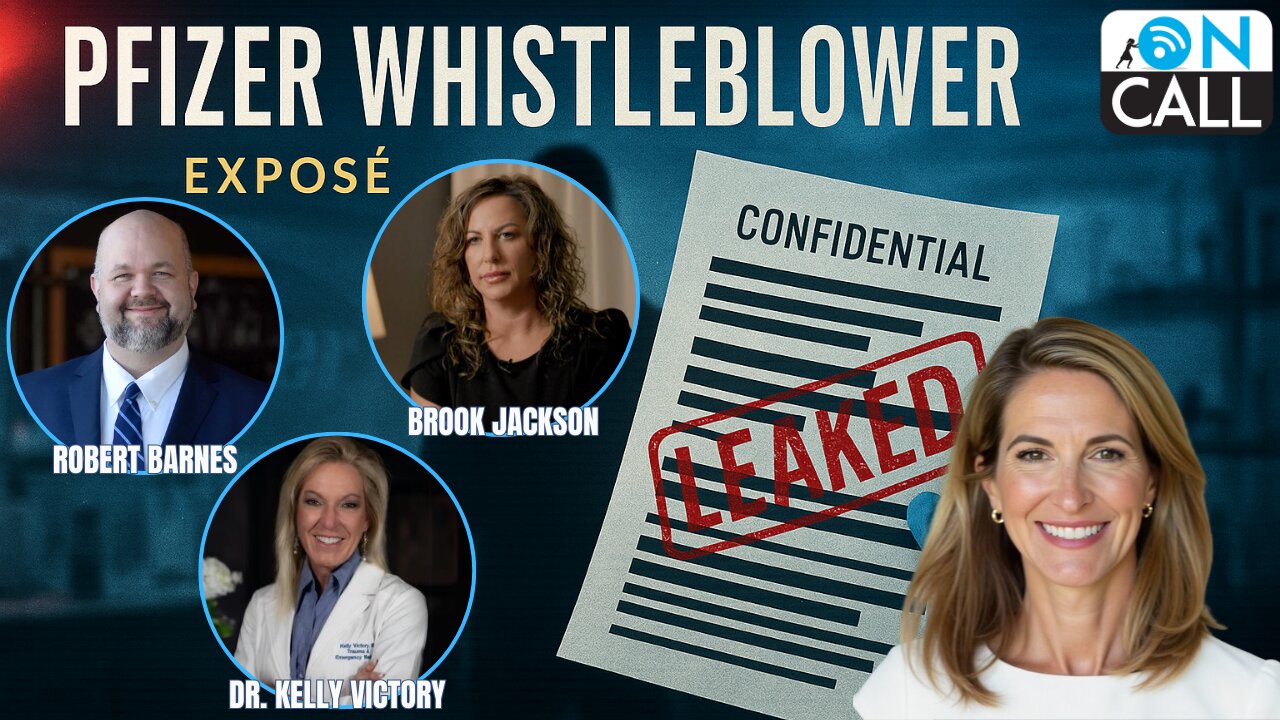I. INTRODUCTION
A. Art of the Day
Christmas music, my favorite season thanks to my father, by wondrous choirs, which also was my father’s favorite form of Holiday cheer. This particular album from the Vienna Boys Choir.
B. Wisdom of the Day
“Ignore them, and you get Fuentes, but worse.” Carl Benjamin on young men in the west.
C. Cultural Recommendation
Greatest Christmas movie ever. https://www.imdb.com/title/tt0097958/
D. Appearances
- LIVE w/ Tom Woods
- LIVE w/ Dr. Bowden & Brook Jackson
II. THE EVIDENCE
*Note: A reminder — links are NOT endorsements of the ideas contained therein. The Library is big, and it often consists of ideas I do not personally share, but whose ideas are worth further exploring.
A. Daily News of Interest
- Erika Kirk announces support for Vance 2028. https://www.msn.com/en-us/news/politics/erika-kirk-endorses-jd-vance-for-president/ar-AA1SEd5F
- Left populism rebuild. https://www.liberalpatriot.com/p/the-future-of-the-left-in-the-21st-ef0
- Big MAHA wins on trans interventions. https://www.themahareport.com/p/breaking-kennedy-signs-medical-declaration
- Somali fraud. https://archive.is/lMATr
- Georgia comes clean on 2020, in part. https://thefederalist.com/2025/12/17/fulton-county-we-dont-dispute-315000-votes-lacking-poll-workers-signatures-were-counted-in-2020/
*Bonus: Kimchi heals. https://www.sciencedaily.com/releases/2025/12/251216081945.htm
B. Daily Deep Dive: Zoomer Men Rebel
- Zoomer men missing relationships. https://isaiahmccall.substack.com/p/gen-z-men-have-given-up-on-dating
- Condemned for their gender. https://yougov.co.uk/society/articles/52863-young-men-masculinity-and-misogyny
- No good jobs. https://fortune.com/2025/08/25/gen-zers-neets-jobless-men-unemployed-higher-rates-women-healthcare-coding-ai/
- No home. https://fortune.com/2025/12/12/gen-z-giving-up-on-owning-home-spending-more-saving-less-working-less-risky-investments/
- Carl Benjamin explains.
*Bonus: Hollywood attacks young men. https://slate.com/culture/2024/11/entertainment-hollywood-masculinity-male-role-models-movies-tv-social-media.html
C. Cases of Consequence
- Brown University murder case. https://www.the-independent.com/news/world/americas/crime/claudio-neves-valente-reddit-brown-shooting-b2887811.html
- Epstein Files release.
- Bongino retires. https://x.com/barnes_law/status/2001725595022160288?s=20
- Judge convicted. https://www.npr.org/2025/12/18/nx-s1-5648584/judge-hannah-dugan-guilty-obstruction-ice
- 1stA & immigration judges. https://www.courthousenews.com/wp-content/uploads/2025/06/opinion-immigration-judges-free-speech-trump.pdf
- Maryland reparations legislation. https://apnews.com/article/slavery-reparations-wes-moore-veto-maryland-9c134edbf0410228035743a8dc546171
- Luigi. https://courthousenews.com/luigi-mangione-faces-uphill-battle-after-marathon-evidence-hearing/
- 1A & new antisemitism laws. https://www.courthousenews.com/wp-content/uploads/2025/11/antisemitism-lawsuit.pdf
- Minnesota whistleblower suit: bogus child abuse grant scam. https://www.courthousenews.com/wp-content/uploads/2025/12/sharon-vs-harper-complaint.pdf
- Walmart sexual assault. https://www.courthousenews.com/wp-content/uploads/2025/12/walmart-could-have-foreseen-sexual-assault.pdf
*Bonus: Baby Shark suit. https://ww3.ca2.uscourts.gov/decisions/isysquery/892398f9-ac03-458a-8ba1-dce37861e63c/1/doc/24-313_opn.pdf#xml=https://ww3.ca2.uscourts.gov/decisions/isysquery/892398f9-ac03-458a-8ba1-dce37861e63c/1/hilite/
III. Best of the Board: Trump Admin Grade
On the 1st year of the 2nd term of the Trump administration
- UncleBugbite: I'm a young man with decades ahead of me to suffer under our bullshit kleptocracy. Sure, Kamala Harris isn't president right now. But Trump's absolute failure to address the structural problems is laying the groundwork for something much worse and better prepared than stupid Kamala Harris, with a desperate population willing to risk more extreme measures for any sort of relief. Trump's weakness is wasting the tiny opportunity we had to fix things, and frankly I'm terrified.
- JoeKD: This Country was a FUCKING MESS. You just don't clean up a Mess like that in 9 months. Give the man some time. It'll get there. As far as Foreign Affairs goes, he needed to spend alot of time on that to get our Allies back in line.
- TJefferson: Positives: Immigration/border; JD vance/RFK jr/Tulsi; Multiple pardons; A single month of DOGE. Negatives: Everything else
- Iceni2103: what are we comparing it to? compared to the alternative, it is B+ to A range. Kamala or Biden 2 would have been an utter disaster. compared to the promises: D+? some good things (mostly border, hard changes to trade, and some executive reforms), but he is falling down way too much (hyping up 'peace deals' that don't last, warmongering Venezuela, dragging out Ukraine, unforced errors on staffing and by extension big issues like Epstein, DOGE/BBB, and MAHA, listening to neo-cons like he needs to please them, focus on donors not voters).
- Bdmichael09: The only thing hes actually done that truly matters is stop the insane flow of mass migration. That is great, but he hasn't delivered really on anything else. Russia/Ukraine is still a shit show. He bends over and takes it up thr ass for Israel daily rather than put them in their place as the welfare recipients of the US that they are. This nonsense with Venezuela needs to stop, now. He hasn't handled any of the corruption in the bureaucratic state. His push to lower interest rates is a recipe for disaster. We need more restrictive monetary policy after the covid insanity, not easy money policy. Its going to take at least a decade to recover from those awful Congressional decisions in 2020 and 2021. He hasn't actually held the DEI bureaucracy to account in Universities. Many universities kept all of the DEI people but renamed the departments/roles and there has been 0 follow up on actually stomping that out.
- Ktrimbach: I go back and forth between B- and C+. He’s still the best President of my life (starting with Nixon), but Oh so much less than he could be!
IV. Closing Argument: The Constitution, Article 1, The Power of Impeachment
- Aside from the power of the purse, the other principal power afforded the legislative branch is the power to remove executive officers, including the President and Judges, in the power of Impeachment.
- As always, we start, first and foremost, with the text. Section 3 of Article 1 provides the House
shall have the sole Power of impeachment” while ascribing to the Senate “the sole Power to try all Impeachments.” The Constitution requires “no person shall be convicted without the concurrence of two thirds of the Members present.” The constitution constricts the impact of impeachment to “not extend further than to removal from Office and disqualification to hold and enjoy any Office of honor, Trust or Profit under the United States.” Further, “the Party convicted shall nevertheless be liable and subject to Indictment, Trial, Judgment and Punishment according to Law” by authorities other than the legislative branch. - Of note, Article 1 otherwise remains mute on the issue of impeachment. The other Articles answer who can be impeached and the legal predicates for cause to issue such impeachments. Section 4 of Article 2 provides impeachment for the President, Vice President “and all civil Officers of the United States.” The cause permitted for their impeachment is limited to “treason, bribery or other high crimes and misdemeanors.” The power to impeach judges is only indirectly referenced, as section 1 of Article 3 provides judges can only hold their offices “during good behaviour.” The only other reference to cause for removal is the obligation for all judicial officers to be “bound by oath or affirmation to support this Constitution” in Article 6. The rules of impeachment permit “each house may determine the rules of its proceedings” in section 5 of Article 1. The “civil officers” subject to impeachment parallel the “principal officers” the Senate must be “advised” and “consented” to the appointment of under Article 2.
- While executive officers can only be impeached for “treason, bribery or high crimes and misdemeanors”, judges can be impeached simply for not holding office during “good behaviour.” Some scholars argue the ‘good behaviour” phrase was just a limitation on at-will firing, and not an independent grounds for impeachment and removal, but early American practice and ancient English practice belies that construction. The contrast evidences that good behavior is a broader provision than treason, bribery or high crimes and misdemeanors. A judge can be impeached for non-criminal conduct. The phrase derives from the Latin – as long as they shall behave themselves well. The legacy of the phrase derives from old English practice dating to the 12th century, intended to protect against arbitrary removal or removal without any limits on discretion, comparable to the principle difference between “at will” employment and “for cause” limits on firing.
- What constitutes such cause for judicial removal? Consider early American practice: merely being drink on the bench was sufficient for impeachment. The principal and paramount precedent of impeachment of judicial officers is the impeachment of Supreme Court Justice Samuel Chase in 1804. What grounds did the House recite: “arbitrary, oppressive and unjust” handling of a trial, including partisan prejudice especially, as reflected in the application of the law, exclusions of evidence, and inaccurate recitations of the law to grand juries. Two examples include the failure to remove biased jurors, excluding defense witnesses, and generally “tending to prostitute the high judicial character with which he was invested, to the low purpose of an electioneering partizan.”
- Sound like any Judges you know?





















